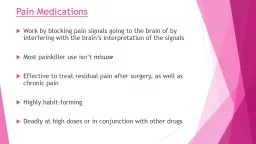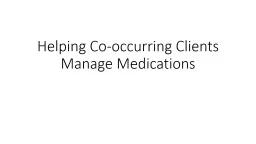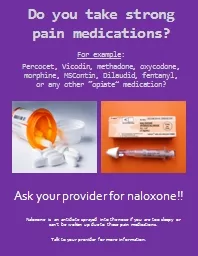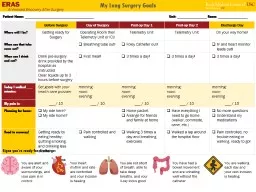PPT-Pain Medications Work by blocking pain signals going to the brain of by interfering with
Author : karlyn-bohler | Published Date : 2018-11-04
Most painkiller use isnt misuse Effective to treat residual pain after surgery as well as chronic pain Highly habitforming Deadly at high doses or in conjunction
Presentation Embed Code
Download Presentation
Download Presentation The PPT/PDF document "Pain Medications Work by blocking pain s..." is the property of its rightful owner. Permission is granted to download and print the materials on this website for personal, non-commercial use only, and to display it on your personal computer provided you do not modify the materials and that you retain all copyright notices contained in the materials. By downloading content from our website, you accept the terms of this agreement.
Pain Medications Work by blocking pain signals going to the brain of by interfering with: Transcript
Download Rules Of Document
"Pain Medications Work by blocking pain signals going to the brain of by interfering with"The content belongs to its owner. You may download and print it for personal use, without modification, and keep all copyright notices. By downloading, you agree to these terms.
Related Documents














